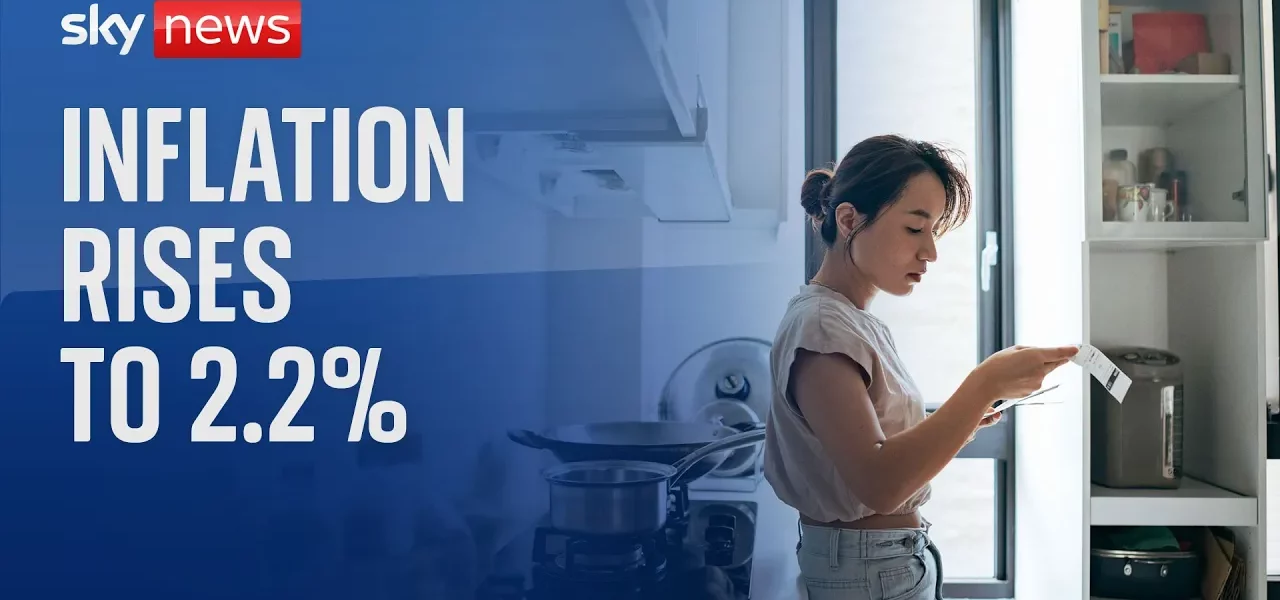Inflation in July: An In-Depth Analysis of the Recent CPI Increase

This article delves into the recent 2.2% inflation figure reported for July, examining its implications for the UK economy, the Bank of England’s targets, and the significant factors contributing to this change. We will also explore the potential future trends in inflation and interest rates.
Introduction
In July, the Consumer Price Index (CPI) in the UK recorded an increase of 2.2%, marking the first rise in inflation this year. This uptick brings inflation slightly above the Bank of England’s target of 2%, which was met in June. The increase, while seemingly small, raises questions about the trajectory of inflation in the coming months and the implications for monetary policy and interest rates. Understanding the factors behind this change is crucial for stakeholders across the economy.
Understanding the CPI Increase
The CPI serves as a critical measure of inflation, reflecting the percentage change in the price of a basket of goods and services over time. The July figure of 2.2% is an increase from June’s 2.0%. This section will explore the reasons behind this rise in more detail.
Statistical Management and Base Effects
A significant portion of the inflation increase can be attributed to statistical management and base effects. These are phenomena where the comparison is made against a prior period where prices were markedly different.
- Energy prices have shown considerable volatility, affecting the overall inflation rate.
- Last year, the energy price cap fell by more than £1,000, while this year, it only decreased slightly, leading to a perceived rise in inflation.
Core Inflation Insights
The core inflation rate, which excludes volatile items like food and energy, is a critical indicator monitored by the Bank of England. As reported by the Office for National Statistics, core inflation stands at 3.3%. This rate is particularly relevant as it indicates the underlying inflationary pressures within the economy.
Implications for the Bank of England
The Bank of England has a pivotal role in addressing inflation through monetary policy, primarily by adjusting interest rates. The following subsections will address the likely implications of the recent inflation data for the central bank.
Interest Rate Considerations
With inflation rising above the 2% target, the Bank of England faces renewed scrutiny regarding its interest rate policy. The expectation for a rate cut in September was previously estimated at 36%, but the latest figures may alter this outlook.
- Interest rates are expected to be held steady, as inflation remains a concern.
- The likelihood of multiple rate cuts in the near future appears diminished.
Wage Growth and Inflationary Pressures
Wage growth remains a significant factor in the inflation equation. Recent figures show wages rising at 5.4%, which indicates that real wage growth is still outpacing inflation. However, secondary inflation effects, often referred to as “baked-in” inflation, are expected to persist longer.
Future Outlook for Inflation and Interest Rates
Looking ahead, the trajectory of inflation and interest rates will depend on various economic factors, including global energy prices and domestic wage growth. The Bank of England’s approach will be closely monitored as market conditions evolve.
Market Expectations
Market sentiment indicates cautious optimism regarding inflation trends. Analysts are keeping a close watch on how energy prices and wage growth will affect the overall inflation landscape.
- It is anticipated that goods inflation will continue to decline.
- Service inflation, however, remains stubbornly high.
The Path Forward
While recent data shows a slight uptick in inflation, it is essential for both policymakers and consumers to remain vigilant. The Bank of England may adjust its strategies based on upcoming economic indicators, particularly as they relate to energy prices and wage dynamics.
Conclusion
In summary, the July inflation figure of 2.2% raises important questions regarding the future of monetary policy in the UK. While this increase is minor, it highlights the ongoing challenges the economy faces in managing inflation. Stakeholders are encouraged to stay informed and engaged as we monitor the developments that will likely influence interest rates and overall economic stability. To learn more about inflation trends and economic policies, check our related articles on [monetary policy](#) and [economic forecasts](#).
“`




